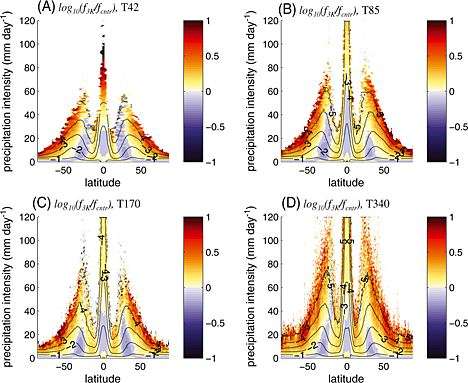Ocean warming could drive heavy rain bands toward the poles

In a world warmed by rising atmospheric greenhouse gas concentrations, precipitation patterns are going to change because of two factors: one, warmer air can hold more water; and two, changing atmospheric circulation patterns will shift where rain falls. According to previous model research, mid- to high-latitude precipitation is expected to increase by as much as 50%. Yet the reasons why models predict this are hard to tease out.
Using a series of highly idealized model runs, Lu et al. found that ocean warming should cause atmospheric precipitation bands to shift toward the poles. The changes in atmospheric circulation brought on by a warming ocean should cause an increase in the intensity and frequency of extreme precipitation events at mid- and high-latitudes, and a reduction in the same near the equator. The changes would mean that, for high-latitude regions, now-rare storms would become much more common.
The authors tested the effect of ocean warming on atmospheric circulation and precipitation using a highly idealized "aquaplanet" model, a representation of the Earth that was just sea and sky, but no land. They ran the model at a range of spatial resolutions and found that the changes in precipitation that stem from changing circulation patterns may possibly outweigh changes that derive from other factors.
More information: Lu, J., L. Ruby Leung, Q. Yang, G. Chen, W. D. Collins, F. Li, Z. Jason Hou, and X. Feng (2014), The robust dynamical contribution to precipitation extremes in idealized warming simulations across model resolutions, Geophys. Res. Lett., 41, 2971, DOI: 10.1002/2014GL059532
Journal information: Geophysical Research Letters
Provided by Wiley


















